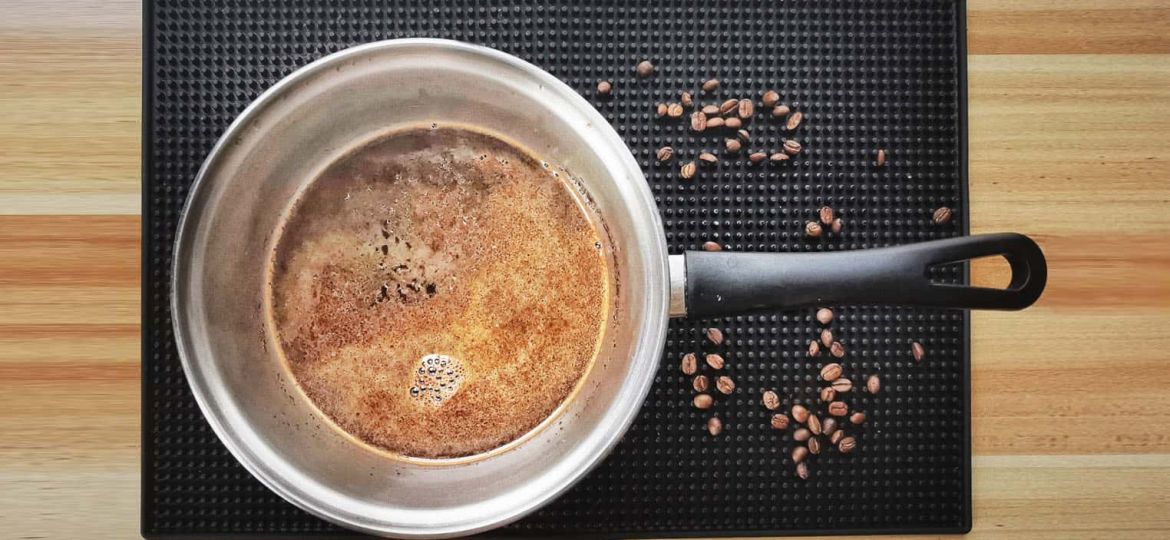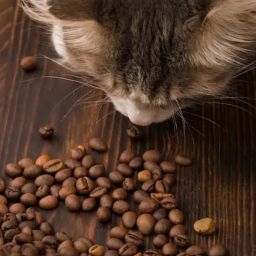
The tradition of boiling coffee beans dates back centuries, rooted in various cultures around the world. This method, often seen as the simplest form of brewing, involves directly boiling coffee beans or grounds in water. The approach is distinct from modern brewing techniques, offering a unique flavor profile and caffeine extraction.
Historically, boiling was one of the earliest methods to make coffee, predating the sophisticated machines and gadgets of today. It reflects a time when the ritual and art of coffee making were shaped by the limited resources available, yet it has persisted in various forms due to its simplicity and the robust flavors it can produce.
The Impact of Boiling on Coffee Beans
Boiling coffee beans affects their flavor, aroma, and caffeine content in significant ways. The process of extraction is central to understanding these changes. Ideal water temperature for coffee extraction ranges between 195 to 205 degrees Fahrenheit (90 to 96 degrees Celsius), as suggested by the National Coffee Association. However, boiling water exceeds this range at 212 degrees Fahrenheit (100 degrees Celsius), leading to over-extraction.
Over-extraction pulls out too many of the beans’ bitter compounds, overshadowing the nuanced flavors and aromas that are more pronounced at optimal extraction temperatures. Moreover, while boiling does not significantly alter the caffeine content, the overall taste and quality of the coffee can be compromised, resulting in a brew that is often bitter and less aromatic.
Comparing Brewing Methods
Boiling coffee is markedly different from other brewing methods like drip brewing, espresso, and the French press, each of which utilizes specific temperatures and pressures to extract flavors. Drip brewing and French press methods aim to steep coffee grounds at temperatures within the ideal extraction range, avoiding the bitterness associated with boiling.
Espresso, on the other hand, uses high pressure to force water through finely ground coffee, extracting a concentrated flavor in a matter of seconds. These methods are designed to maximize the extraction of desirable flavors and aromas while minimizing the release of bitter compounds. In contrast, boiling coffee beans tends to produce a uniform extraction that can easily tip into over-extraction, leading to a brew that lacks the complexity and balance achievable through more controlled brewing techniques.
Step-by-Step Guide to Boiling Coffee Beans
Preparation
To boil coffee beans effectively, you will need a few basic items: a pot or saucepan for boiling, fresh coffee beans (preferably coarsely ground if possible), clean water, a heat source (like a stovetop), and a strainer or cheesecloth for filtering. The quality of the coffee beans and water can significantly affect the taste of the brewed coffee, so choosing high-quality, fresh beans and filtered water is recommended for the best results.
Boiling Process
- Measure Your Ingredients: Use approximately 2 tablespoons of coffee beans for every 6 ounces of water, adjusting to taste.
- Heat the Water: Pour the water into your pot and bring it to a boil using a stovetop.
- Add Coffee Beans: Once the water is boiling, add the coffee beans to the pot. Stir gently to ensure all beans are fully immersed.
- Maintain the Boil: Allow the mixture to boil for about 2 to 3 minutes. This duration is crucial for extracting the flavors without over-extracting and becoming bitter.
- Simmer: After boiling, reduce the heat and let it simmer for an additional 2 to 3 minutes, stirring occasionally.
- Cool Down: Remove the pot from the heat and let it sit for a minute, allowing the grounds to settle.
Post-Boil Tips
Once boiled, carefully strain the coffee mixture through a strainer or cheesecloth to remove the coffee grounds. Serve the coffee immediately to enjoy its fullest flavor. For enhanced taste, consider adding milk, sugar, or cream to your boiled coffee. Cleaning your equipment promptly after use will help maintain the quality and flavor of your coffee over time.
Overview of Alternatives
For coffee lovers without access to a coffee maker, several alternative brewing methods can yield delicious results. The stovetop method involves simmering coffee grounds in water, similar to boiling but with more controlled heat. The French press, another popular choice, steeps coffee grounds in hot water before pressing down a plunger to separate the grounds from the liquid.
Each method offers a unique way to extract flavors from coffee beans, providing options for those seeking to experiment with their brewing routine.
Pros and Cons
Boiling coffee beans is straightforward and requires minimal equipment, making it accessible to many. However, it risks over-extraction, which can lead to a bitter taste compared to other methods that allow for more precise control over temperature and extraction time.
The stovetop and French press methods offer more nuanced flavors and smoother coffee by maintaining optimal brewing conditions. However, they may require more specialized equipment and a bit more effort to perfect the brewing technique. Ultimately, the choice between boiling and alternative methods depends on personal preference, desired convenience, and the specific flavor profile one is aiming to achieve.
FAQS
Can You Boil Whole Beans?
Yes, you can boil whole coffee beans. Boiling whole beans is a less common method but can be useful in situations where you don’t have access to a grinder. The process involves simmering the beans in water for an extended period, usually around an hour, to extract the flavors. This method typically results in a milder brew compared to using ground coffee and requires a longer brewing time to achieve a similar strength.
Difference Between Boiling Ground and Whole Beans
The main difference between boiling ground and whole coffee beans lies in the extraction rate and flavor profile. Ground coffee has a larger surface area exposed to water, allowing for quicker and more efficient extraction of flavors and caffeine. This results in a stronger and more flavorful cup of coffee in a shorter amount of time. Boiling whole beans, conversely, leads to a slower extraction process, often yielding a milder flavor and less caffeine per cup.
How Boiling Affects Caffeine Content
Boiling coffee beans, whether whole or ground, does not significantly alter the caffeine content compared to other brewing methods. Caffeine is highly soluble in water, especially at high temperatures, so boiling effectively extracts caffeine from the beans. However, the strength of the coffee, and thereby the perceived caffeine content, can vary based on the duration of boiling and the ratio of water to coffee.
Conclusion and Summary
Boiling coffee beans is a traditional method that offers a unique approach to brewing. It allows for the extraction of flavors and caffeine without the need for specialized equipment, making it accessible to everyone. Whether using whole beans or grounds, this method can produce a satisfying cup of coffee, though it may differ in strength and flavor profile from those brewed using more modern techniques.
For those interested in exploring the rich history and simplicity of coffee brewing, boiling coffee beans presents an excellent opportunity. It is advisable to start with fresh, quality beans and clean water to ensure the best possible flavor. Experimenting with the water-to-coffee ratio and boiling time can help you tailor the brew to your taste preferences. Whether in a pinch without a grinder or simply curious about traditional brewing methods, boiling coffee offers a direct and rewarding way to enjoy your favorite beans.









